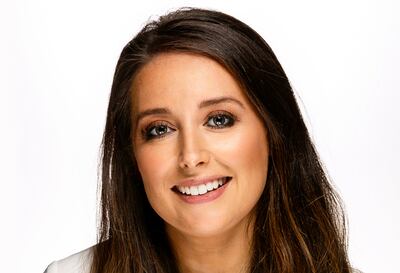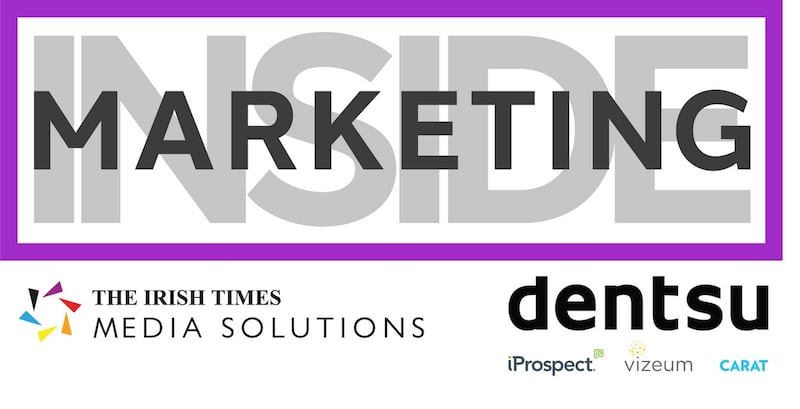There was a time when TV and traditional above-the-line (ATL) media were the routes of choice to talk to our audiences, but then consumer habits began to shift and gradually the marketing mix reflected this.
Now experiential marketing is the weapon of choice for brands who want to connect and resonate with their hard-to-reach consumers, whose habits can make them elusive.
On this week's Inside Marketing podcast, Aideen O'Neill and Brian Muldowney of Verve Marketing join us to discuss the future of Experiential marketing in a post pandemic world. Listen now:
Pre-pandemic research and metrics showed that more than 80 per cent of consumers who had taken part in a branded experience said that it has a positive impact. Half of them go on to buy something from the brand solely down to the influence of the branded experience.
CMOs recognised the need to increase their experiential spending to engage their discerning audiences who thrive on real-life interactions. And even though it’s been heavily impacted by the global outbreak of Covid-19, experiential remains a key investment for many marketers.

By a significant margin, consumers say the top two advertising channels that best help them understand the benefits of products and services are brand websites, and events and experiences. Essentially all other marketing channels and brand-controlled information sources are considered secondary to consumers.
Brand strategy that engages the consumer, creating real-life experience that will be remembered best and authentic engagement is powerful – brands with real purpose are more likely to gain consumer trust, which results in brand advocacy.
Nothing is more powerful than genuine word of mouth – experiential is the best way to manifest this.
Reaction and rewards
At the outset of the pandemic as the whole world faced an unknown journey, the first reaction was to batten down the hatches – brands were going to ride it out thinking we were facing a short-term “pause” on life as we knew it. But as it became apparent that Covid was going to be around for much longer than anyone could have imagined, some brands got a little braver and spotted opportunities to engage, entertain and resonate with audiences virtually.
For example, by the end of 2020 – more than six months into the pandemic – we were all absolutely yearning to travel. Some brands spotted this as an opportunity and moved fast to innovate.
With searches of “virtual” up 500 per cent, the virtual world is allowing us to escape while staying exactly where we are, taking us from a single geographic point to huge global horizons in a single click with ground-breaking new ways of satisfying that wanderlust from home.
One great example of this is Amazon Explore; a live guided touring service curated by the brand, where international borders are easily traversed from the comfort of your sofa without the need to buy any new hardware, download software or even spend huge amounts of money.
Here, a live tour guide will bring you on an exclusive tour of your chosen location. You interact live with the host, can indicate what you’d like to take a look at or move toward, make local purchases via your Amazon account and even speak to locals by activating a loudspeaker function which is clickable on your screen.
This level of immersion and control gives users a much richer experience and the opportunities here are endless. The one drawback is the amount of people that can engage at any one time. But the speed at which development is happening means this will quickly change. So now is the time to get onboard.
Brands with purpose
The future is bright. The desire to bond through shared experiences is a fundamental human trait, so there will always be a huge appetite for reconnection in the physical world. However, in our post-Covid world, consumers, a whopping 86 per cent of them, want to see significant change.
The “now” is about making a marked distance towards “a new world”, designing a purposeful recovery that safely delivers us back to a “live” world, but learning from the times we’ve just traversed.
But what is a purposeful recovery? It’s fulfilling a consumer need for more than just “talking the talk”. It’s backing up that talk with measurable, observable, repeatable action, genuinely supporting real movements, not just moments, and doing it in a way that is authentic to your brand and speaks to your audience – past, present and future.
With 74 per cent of consumers expecting brands to take a stand on important, relevant contemporary issues and 83 per cent of people globally feeling that brands should be using their social channels to create a sense of community and support, the future of experiential sees a tectonic shift in brand ethics and behaviour which makes highlighting and delivering on their core values fundamental to their customers.
Multi-experience future
For now as we take the first few tentative steps back to “normal”, there will definitely continue to be a blended virtual/in real-life approach. Event organisers and brands have innovated so much and so quickly during the pandemic. There are amazing outputs that will see us take the virtual and keep it embedded in the real life for now. The interim experiences we created to tide us over, especially around concerts, festivals and premieres, will continue to influence and inspire events for the foreseeable future.
The industry benchmark was set with Billie Eilish’s online concert in October 2020. High-end mixed media design and clever use of the physical venue created a multidimensional show with which the audience could interact via the virtual platform, giving the sensation of a real concert, even from home. This was a best-in-class example of how to bring a superscale audience experience to the remote guest and this type of approach is likely to be an additional layer for real-life activities too – the experience is extended and enjoyed by those who can’t be in the room.
We know the experience landscape has changed and will never be going back. But going back isn’t what we want to do. The development and additions of technology are going to make all experiences richer, consumers will expect greater control and see themselves as the creator and curator of their own experience. With this in mind, we need to always be focused on adding user interaction to everything we do. The multi-experience future will require a deeper tech and human integration allowing for unique user experience.
As new possibilities arise, brilliantly blending the virtual and in-person experiences will be our new playing field. Now is the time to consider how you are going to stand out from other players.
The future of experiences is determined by connection. We have to create seamless, purposeful journeys for consumers regardless of the place or platform. What is your brand doing or planning to create a rich, deeply integrated experience? This will be essential to building value for the consumer and the brand.
Insights aren't there to validate something you are already doing. Insights and trends should spur fresh ideas, open closed doors and encourage you to try new things. If there was ever a time to try new things, this is it.
Aideen O’Neill is Head of Activations and Sustainability Manager at Verve
[ irishtimes.com/insidemarketingOpens in new window ]











